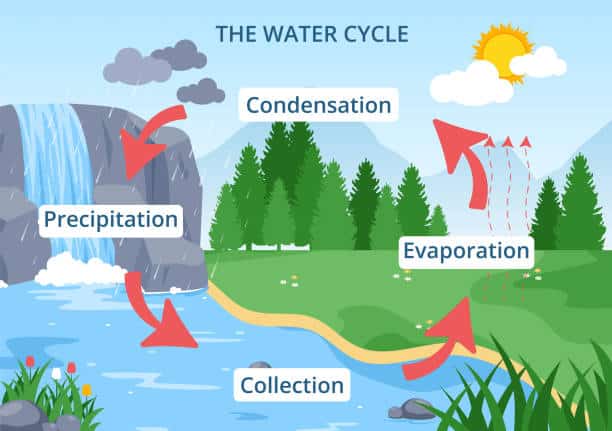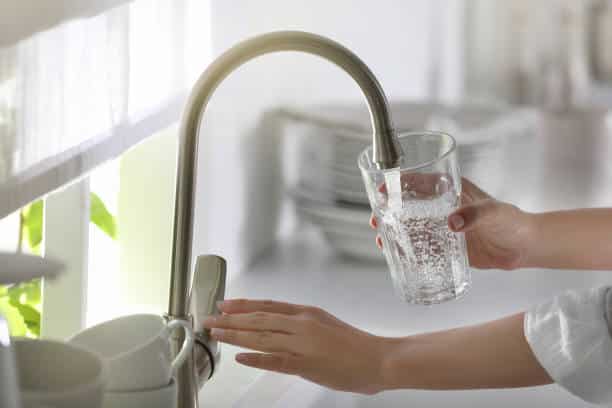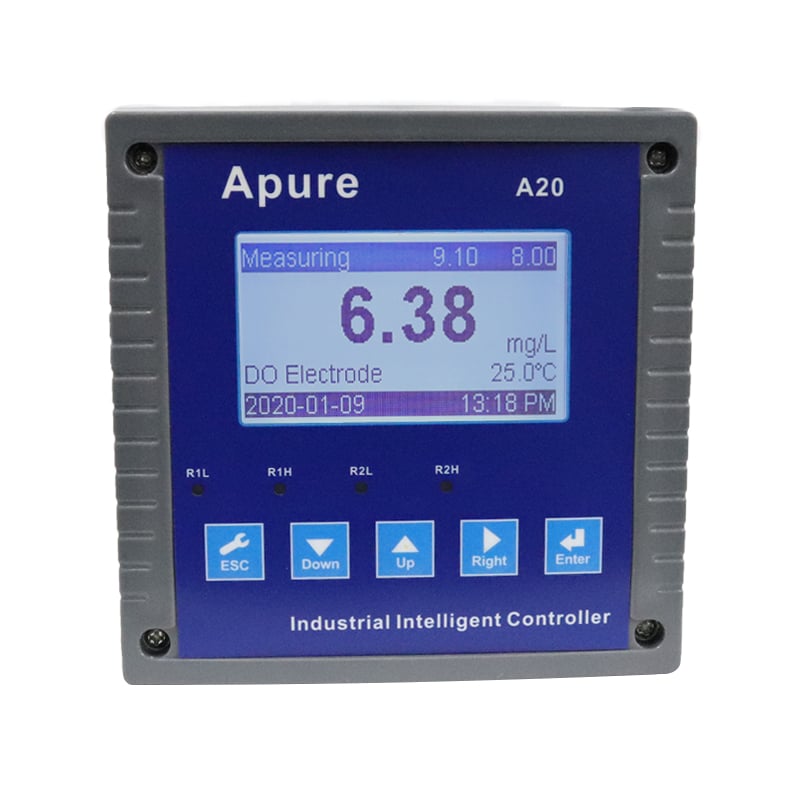Clean water is so prevalent in our lives that it is easy to overlook its precious value. However, it is this clear water that plays a vital role in the environment, maintaining ecological balance, supporting biodiversity, and influencing human health and the sustainable development of society.
Clean water and ecosystem diversity
Providing habitat and food
Bodies of water, such as rivers, lakes and wetlands, are important habitats for a wide variety of organisms. For example, many species of fish thrive in freshwater bodies of water, and wetlands are critical habitats for birds, amphibians, and reptiles. In these bodies of water, these organisms find food, reproduce and build parts of the ecosystem.

Hazards of water pollution on biodiversity
However, water pollution poses a serious risk to ecosystem diversity. Pollutants such as chemicals, heavy metals and toxic wastes can enter water bodies and have harmful effects on the organisms in them. These pollutants may lead to poisoning, spread of diseases and even death of aquatic organisms. In addition, a decline in water quality may lead to the death of plants in the water, depriving other organisms in the food chain of their food source.
Clean water is therefore essential for maintaining the diversity of ecosystems. By keeping water bodies pure and reducing pollution, we can hope to protect and restore a wide range of living species and maintain the balance and health of ecosystems. This is essential to preserve our natural heritage and to ensure that future generations can continue to enjoy a diverse natural world.
The role of clean water in the Earth’s water cycle
Clean water plays a vital role in the Earth’s water cycle, with far-reaching implications for climate regulation and the carbon cycle.
Clean water’s role in the water cycle: The Earth’s water cycle is a complex system that includes evaporation, precipitation, groundwater, rivers, lakes and oceans. Clean water plays a key role in this cycle because it is the agent of evaporation and precipitation. When water quality is polluted, pollutants in precipitation also increase, which can negatively impact ecosystems and climate.
Clean water and climate regulation: Clean water is particularly important for climate regulation. First, clean water helps maintain humidity in the atmosphere and promotes precipitation. Second, bodies of water such as lakes and rivers store large amounts of fresh water, which contributes to temperature regulation. Most importantly, water bodies such as wetlands are key locations for carbon sequestration.
Carbon sequestration: Aquatic ecosystems such as wetlands can absorb and sequester large amounts of carbon. Organic matter from plants and soil is stored in these ecosystems, reducing the concentration of carbon dioxide in the atmosphere and helping to reduce greenhouse gas emissions, thereby slowing climate change.
In addition, clean water helps to maintain the balance of climate patterns and reduces the risk of extreme weather events, such as floods and droughts.

Clean water and human health
Clean water is an indispensable resource for human health, as it is directly related to our drinking water and quality of life. In this section, we will emphasize the critical importance of clean water to human health, while discussing the potential health risks of contaminated water and providing recommendations for ensuring safe and clean water sources.

The essentiality of clean water for human health: Drinking water is an essential part of our lives and is vital to our health. Clean water is used not only for drinking, but also for cooking, personal hygiene and agriculture. It can help prevent water-borne infectious diseases, maintain normal body functions and promote a healthy lifestyle.
Potential health threats from contaminated water: However, contaminated water poses a potential threat to human health. Chemicals, microorganisms and harmful substances in water may cause waterborne diseases such as diarrhea, cholera and other infectious diseases. Long-term exposure to contaminated water can lead to chronic health problems such as cancer, neurological problems and reproductive problems.
Provide recommendations to ensure safe and clean water sources: To ensure safe and clean water sources, we can take the following measures:
- Regularly test water quality: Conduct water quality monitoring to ensure that the quality of water sources meets hygiene standards and to detect potential contamination problems at an early stage.
- Adopt proper wastewater treatment: ensure that wastewater is properly treated to prevent harmful substances from entering the water source.
- Adopt sustainable agricultural and industrial practices: Reduce sources of pollution and minimize the discharge of pollutants through sustainable agricultural and industrial practices.
- Support water conservation programs: Actively support and participate in water conservation programs and advocate for environmental actions.
Water quality monitoring and environmental protection
Water quality monitoring plays a key role in maintaining clean water and environmental protection. It not only helps to understand the quality of water bodies, but also helps us to identify pollution problems at an early stage and take necessary measures to protect the environment.
The critical role of water quality monitoring
Monitoring water quality is the process of assessing the quality of a water body by taking water samples and analyzing them chemically, physically and biologically.
Sampling: It is important to select appropriate sampling points and sampling frequency. Water samples should be taken at different times and locations to ensure a complete picture of the quality of the water body.

Analysis: Water samples are collected for chemical, physical and biological analysis. This includes detection of harmful substances such as heavy metals, organic compounds, bacteria and nitrogen and phosphorus.
- Chemical Analysis: Chemical analysis is used to detect a variety of contaminants in the water, such as heavy metals, organic compounds, nitrogen, phosphorus, pH, etc. This usually requires laboratory testing. This usually requires laboratory testing.
- Physical Analysis: Physical analysis involves the determination of parameters such as temperature, turbidity, color, conductivity and dissolved oxygen of water.
- Biological Analysis: Biological analysis typically involves the detection of the type and amount of microorganisms, aquatic organisms and benthic organisms in the water to assess the ecological health of the water body.
Data logging: Record the time and location of sampling and analytical results. These data are used to monitor changes in water quality and problem identification.
Parameters to be monitored for water quality monitoring
| Parameter | Unit | Standard Range |
| pH Value (A30 Hydroponics ORP pH Controller) | – | 6.5 to 8.5 |
| Dissolved Oxygen (A20 Digital Optical DO Meter) | mg/L | 5 and above |
| Temperature (WSS Temperature Bimetal Thermometer) | °C | 0 to 30 |
| Turbidity (KS-710 Industrial Water Turbidity Sensor) | NTU | Below 5 NTU |
| Ammonia Nitrogen (NHN Online Ammonia Nitrogen Sensor) | mg/L | Below 0.2 mg/L |
| Total Suspended Solids (TSS) | mg/L | Below 50 mg/L |
| Lead (Pb) | μg/L | Typically below specific national/regional standards |
| Mercury (Hg) | μg/L | Typically below specific national/regional standards |
| Cadmium (Cd) | μg/L | Typically below specific national/regional standards |
| Escherichia Coli (E. coli) | CFU/100 mL | Below 200 CFU/100 mL |
| Nitrogen (Total Nitrogen) | mg/L | Typically below specific usage standards |
| Phosphorus (Total Phosphorus) | mg/L | Typically below specific usage standards |





Please note that these are general standard ranges, and actual standards may vary by region, purpose, and regulations. Water quality monitoring typically needs to comply with specific national or regional regulations and standards to ensure that the water quality is suitable for a particular purpose, such as drinking water, agriculture, industry, ecological conservation, etc.
Maintaining clean water resources and sustainable development
Importance of water resources management
Water resource management is critical as it affects the sustainability of drinking water supplies, agriculture, industry, fisheries and ecosystems. Effective water resource management has become particularly urgent with the increase in global population and the challenges of climate change. We must balance current and future needs to ensure a sustainable supply of water resources.

Strategies and methods for sustainable management
- Improving water use efficiency: By adopting efficient irrigation techniques and reducing leakage and waste, we can reduce water waste and improve water use efficiency.
- Ecosystem restoration and protection: Protecting wetlands, forests and other aquatic ecosystems helps to maintain the water cycle and ecological balance, reduce flood risk and promote biodiversity.
- Renewable energy: The use of renewable energy sources, such as solar and wind power, reduces dependence on water resources, especially water used in power generation and cooling processes.
- Improved wastewater treatment: Invest in and improve wastewater treatment facilities to reduce the discharge of hazardous substances and ensure that treatment processes meet environmental standards.
- Water resources planning: Develop comprehensive water resources planning to ensure rational allocation and sustainable management of water resources, including multi-sectoral and international cooperation.
Summary
In summary, clean water is a key element of life and environmental well-being, providing multiple benefits ranging from supporting ecosystems and climate regulation to protecting human health and promoting economic growth. Its importance cannot be underestimated and concerted efforts are needed to ensure its protection and sustainable use.
Apure offers a wide range of water quality parameter analyzers, flow measurement, level measurement, pressure measurement, temperature measurement and ozone generators. Feel free to contact us.
